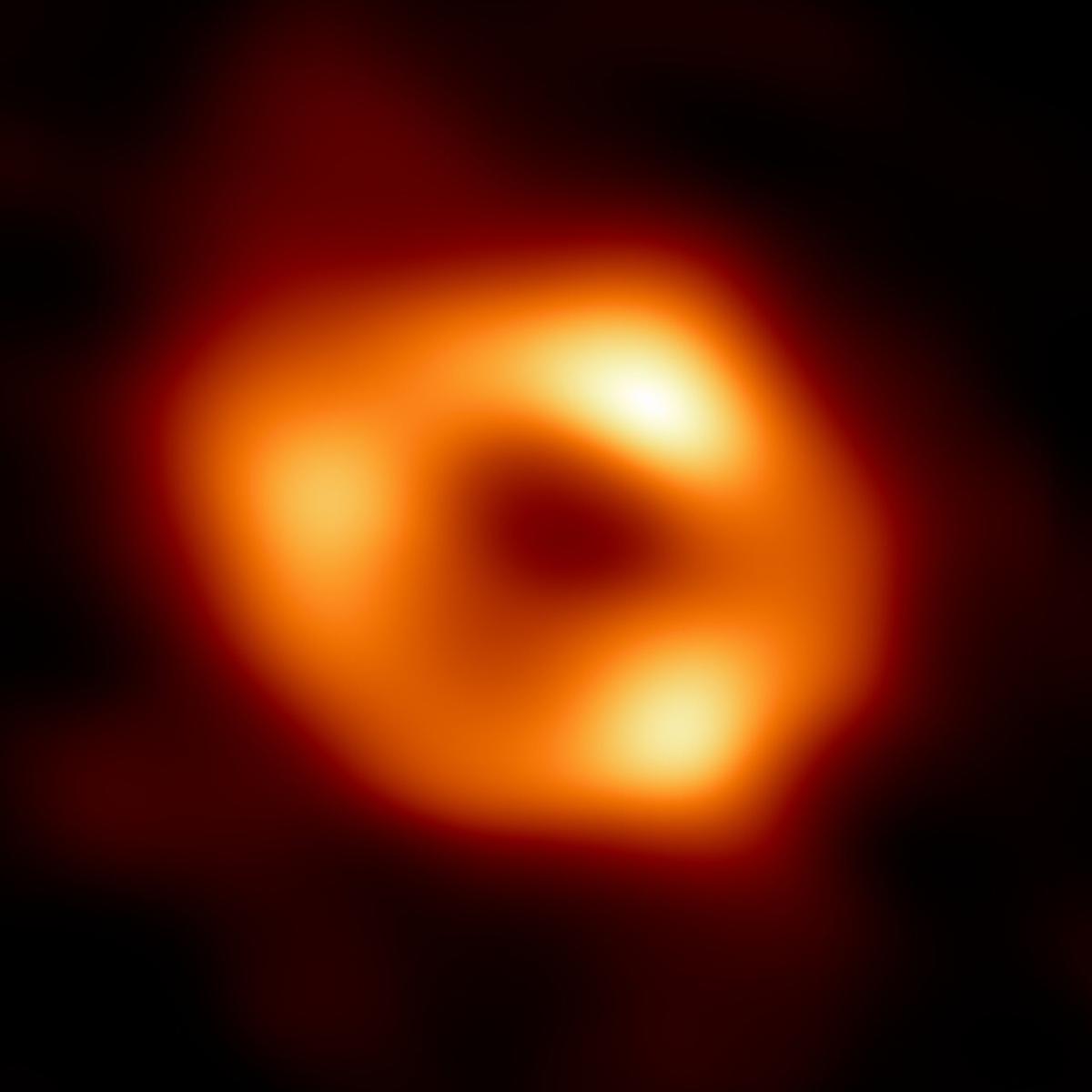Blackhole: In press conferences held around the world, scientists from the Event Horizon Telescope(EHT) facility, a collaboration of over 300 researchers, revealed the first image of the black hole at the centre of the Milky Way. This image of the Sagittarius A* (SgrA*) black hole added to the evidence that the compact object at the center of our galaxy is, in fact, a black hole. Einstein’s general theory of relativity is strengthened as a result.
The Event Horizon Telescope made history in 2019 when it released the first image of a Blackhole M87*, which is the black hole at the centre of Messier 87, a supergiant elliptic galaxy.
SgrAring-shaped *’s image, which looked a lot like Blackhole M87 *’s
SgrAring-shaped *’s image, which looked a lot like M87 *’s, took up 52 microarcseconds in the field of view, which is about the same size as a doughnut on the moon! The Event Horizon Telescope, a collection of several telescopes around the world that worked together as a giant eye on the earth with a vision 3 million times sharper than the human eye, made the entire exercise possible. We are 27,000 light years away from Sagittarius A*.
The researchers said that imaging Sagittarius A* (SgrA*), the black hole at the centre of the Milky Way, was much more difficult than imaging M87* for the following reasons: first, SgrA* is only one-thousandth the size of M87*; second, the line of sight is obscured by a lot of matter; and finally, because SgrA* is much smaller than M87*, the gas swirling around it takes mere minutes to complete an orb The last provides a level of variability that is difficult to visualise. Long exposures of about 8-10 hours are required for clear imaging, with the object ideally not changing much.
Physics of plasma flows around SgrA*
“Since the physics of plasma flows around SgrA* changes on an hourly time-scale, getting a coherent image with all relevant information from photons corresponding to one orbit is difficult,” says Venkatessh Ramakrishnan, a postdoctoral researcher at Aalto University Metsahovi Radio Observatory and a key member of the calibration and imaging team.
This necessitates more sensitive observations, which can be achieved by expanding the EHT and using advanced image reconstruction algorithms.” He is one of the authors of a paper about this research that was just published in The Astrophysical Journal Letters. The collaboration aspires to increase their capacity so that they can not only image Blackholes but also create movies and research the magnetic field more thoroughly.

